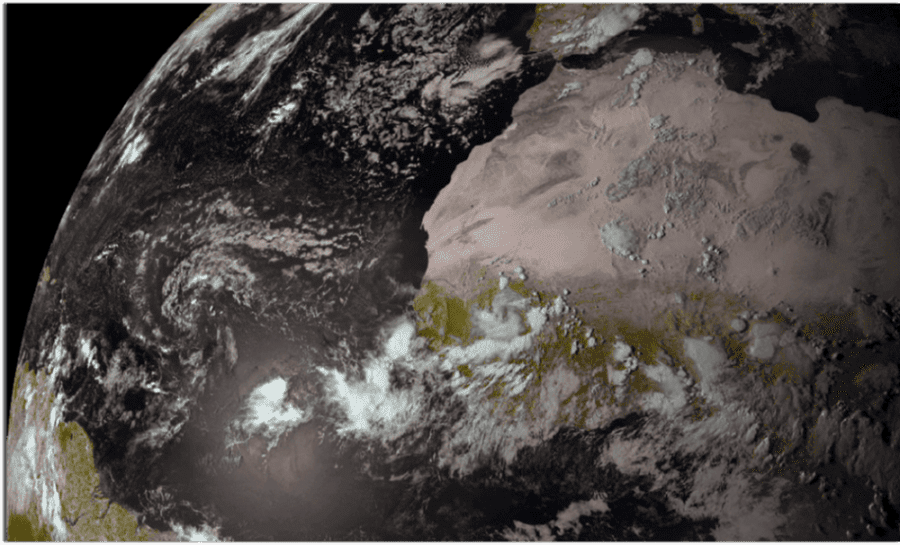By Audrey Merket, National Center for Atmospheric Research (NCAR) | University Corporation for Atmospheric Research (UCAR)
Increased atmospheric moisture may alter critical weather patterns over Africa, making it more difficult for the predecessors of many Atlantic hurricanes to form, according to a new study published this month.
The research team, led by scientists from the U.S. National Science Foundation National Center for Atmospheric Research (NSF NCAR), used an innovative model that allows for higher-resolution simulations of hurricane formation than ever before. This allowed researchers to study the effects of increased regional moisture over Africa, which is the birthplace of weather systems that later produce hurricanes over the Atlantic.
Past research has suggested that warmer ocean water and a moister atmosphere could cause hurricanes to become more intense with greater amounts of rainfall. But how atmospheric moisture, which is predicted to increase in a warming climate, may be impacting hurricane formation itself has not been studied in detail until now.
The researchers found that a moister environment produced weaker and slower-moving African easterly waves, or disturbances which are the primary precursor or “seed” for hurricanes in the Atlantic. The addition of moisture moved the location of thunderstorms within the wave, making it harder for the wave to grow. Increased moisture also slowed the movement of the wave resulting in weaker and delayed hurricane seed formation by the time it reached eastern Atlantic waters.
“Considerable work during the last two decades has emphasized the role of deep moist convection to explain the development of African easterly waves,” said NSF NCAR scientist and lead author Kelly Núñez Ocasio. “But, the precise role of moisture has proven somewhat elusive. With the development of new modeling capabilities, I was able to focus on the role of moisture in cyclogenesis stemming from the hurricane seed.”
The study is funded by NSF NCAR and published in the Journal of Advances in Modeling Earth Systems. Núñez Ocasio pursued the research through the NSF NCAR Advanced Study Program which allows graduate and postdoctoral students to focus on emerging areas of science.
Next-gen modeling
The birth of hurricanes and other tropical cyclones, known as cyclogenesis, is a complex process where small-scale weather events and large-scale atmospherics happen simultaneously. This complexity has made it difficult to study and model the formation of tropical cyclones. Most climate models provide only a grainy picture of what is happening with localized weather, which makes it difficult to learn anything about the role of individual ingredients, like moisture, that mix together to create cyclogenesis.
To address this, the research team turned to the Model for Prediction Across Scales (MPAS). MPAS has the ability to model weather both locally and globally. This capability allowed Núñez Ocasio and her colleagues to zoom out and simulate global moisture and then zoom in to see how that would interact with localized weather events that lead to the formation of tropical cyclones.
The researchers started the experiment by using MPAS to reproduce a moisture-driven African easterly wave that became hurricane Helene in 2006. The team used that base to add or take away moisture and study what happened with those changes.
“When I increased the moisture we saw more convection and thunderstorms, which is to be expected; however, we discovered that the waves struggled to pair with the more intense and deep convection,” said Núñez Ocasio. “With increased moisture, the energy source of tropical cyclone seeds moved north and further away, reducing the kinetic energy available to the African easterly wave, which led to weak, energy-starved tropical cyclone seeds.”
Studying the evolution of tropical cyclones after this initial phase was outside the scope of this study. More research is needed to discover whether these weaker seeds lead to weaker tropical cyclones and hurricanes or if it will just take them longer to form.
The conditions leading to tropical cyclone formation are complex, but researchers hope these newer modeling techniques will lead to better predictions. For instance, Núñez Ocasio is beginning to run simulations where she alters other atmospheric variables key to generating tropical cyclones.
“In addition to moisture, I’m altering other variables in the model to more realistically reproduce a future climate scenario in collaboration with Erin Dougherty, NSF NCAR project scientist,” she said. “So far, I’m seeing similarities to the results of this study even as I alter those other significant pieces.”
More information: K. M. Núñez Ocasio, C. A. Davis, Z. L. Moon, Q. A. Lawton, ‘Moisture Dependence of an African Easterly Wave Within the West African Monsoon System’, Journal of Advances in Modeling Earth Systems (vol 16, Iss 6; 2024); DOI: 10.1029/2023MS004070. NCAR Press Release. Featured image: African easterly wave convection moving over Africa into the Atlantic captured by the Meteosat Second Generation Satellite. Credit: EUMETSAT




